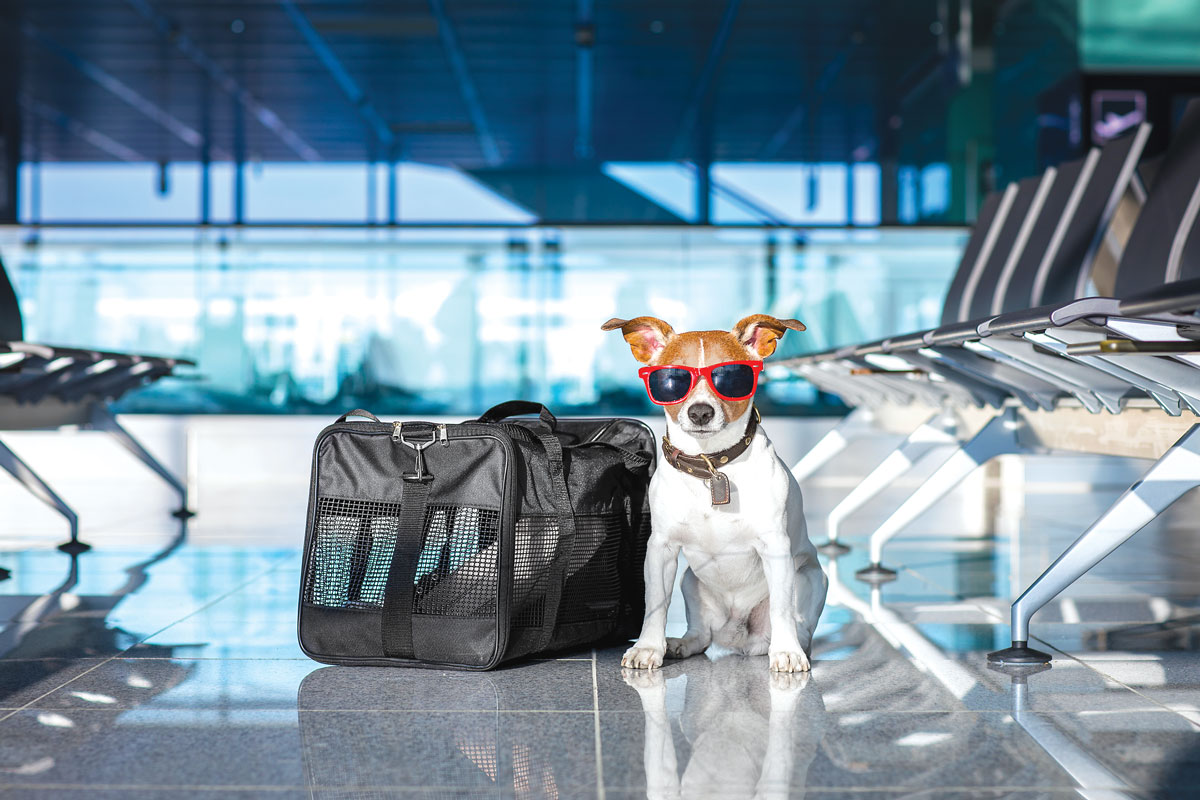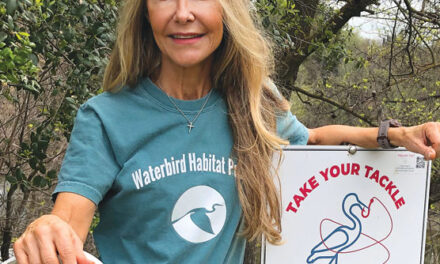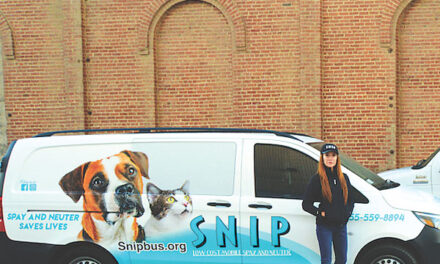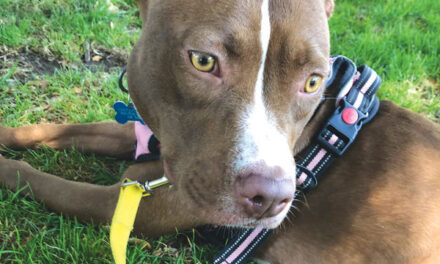Flying With Fido
The inside scoop on traveling via airplane with your pets
By Cathryn Rakich
November 2019
Recently, a dear friend, who has lived in the Sacramento area for 40 years, decided to relocate back home to the Midwest where she spent the first 28 years of her life. Despite the prospect of harsh, snow-laden winters and saying goodbye to her many friends, she sold her Carmichael house and purchased a two-story condo with a stunning view of her new city.

There was just one problem. She had to transport her 17-pound schnauzer mix and four cats more than 1,500 miles to their new hometown. And it was not going to be by car—four cats in carriers and an active pooch on a four-day road trip would be too stressful.
Then life got complicated. My friend moved back to Carmichael not once but two times, which meant she had to make the same move twice in three years—five animals in tow. Needless to say, she acquired some insight into flying with pets.
Most airlines—for in-cabin travel— require each pet to be accompanied by a passenger. In my friend’s case, she had to find four buddies to take four felines, while she escorted her canine. To alleviate her (and the animals’) anxiety she recruited her veterinarian as one of the escorts. On one return flight to Sacramento, she enticed her bank’s loan officer, the officer’s husband and their 13-year-old son with paid vacations to River City and back.
Phoning the airline in advance and speaking directly with an agent is critical. My friend called ahead at least three times to ensure Delta was well aware that she would be traveling with multiple pets.
Yet, when she and her crew arrived at Sacramento International Airport for trip No. 1, the ticket agent said, “We don’t take four cats on this airplane.” Her response? “Yes, you do.” After some back and forth, the supervisor came out—“rule book” in hand—and determined that, indeed, they could accommodate the four felines.
The first-come, first-served rule applies to most airlines, including Delta and Southwest, so make sure you arrive early. The number of pets—typically four to six—allowed in-cabin depends on the airline and size of the aircraft. Weight and age restrictions also vary. A health certificate, usually within 10 days of travel, with proof of rabies vaccination is required per pet.
Regarding sedation, some airlines recommend working with your veterinarian to determine what is best for your animal. Other airlines, such as United, do not accept pets that have been sedated or tranquilized—altitude pressures can cause respiratory and cardiovascular problems. Most airlines also have breed restrictions, such as no short- or snub-nosed dogs and cats, which tend to have breathing issues.
For in-cabin flights, keeping pets in airline-approved carriers that fit underneath the seat is universally required, with the exception of service animals. Fees also differ. For example, Southwest charges $95 for each pet, while Delta and United charge $125. Service animals fly free.
Next comes TSA—Transportation Security Administration. Because airlines want to X-ray the carrier—but can’t with the animal inside—travelers are often asked to hold the pet while walking through the screening device.
When my friend and her entourage reached the body scanner, a TSA employee started to take one of the cats out of the carrier—in the middle of the open airport. After much protest, the traveling felines and one escort were taken to a secured area where the cats were removed from their carriers one at a time. The carriers were scanned and returned.
My friend opted to fly business class with her dog in hopes that the flight attendants would be more patient and helpful if, for example, the pooch decided to start barking or had an in-flight need to potty. Just as they settled in, her would-be seatmate announced, “I’m allergic to dogs.”
With helpful flight attendants, a seat reassignment was quickly made and a second gentleman settled in. “I’m not allergic to dogs. I like dogs,” he reassured her.
As for potty problems—four flights, five pets, 10 hours in carriers—not one accident, she reports with relief.
Further requirements and restrictions apply to international travel, as well as transporting your pets as “checked baggage” instead of “carry on.” Be sure to review information on each airline’s website—and get safely to your final destination with your furry family member.
Cathryn Rakich can be reached at crakich@surewest.net. Follow us on Facebook, Twitter and Instagram: @insidesacramento.















